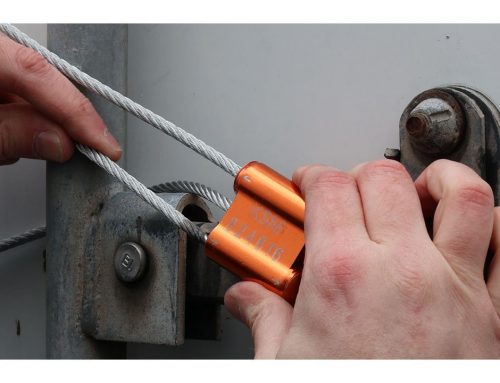Safeguarding Medicine & Medical Equipment Shipments: Preventing Fatal Errors
Safeguarding Medicine & Medical Equipment Shipments: Preventing Fatal Errors
Medical equipment and supplies play a pivotal role in providing quality healthcare, diagnosing illnesses, and saving lives. The seamless functioning of medical facilities heavily relies on the timely and secure delivery of these crucial items. Yet, the journey from manufacturer to medical institution is fraught with challenges, and the potential risks involved cannot be understated.
According to the World Health Organization (WHO), both generic and innovator medicines can be falsified, ranging from very expensive products for cancer to very inexpensive products for treatment of pain. These falsifications affect every region of the world.
Medical equipment shipments often find themselves in a delicate balancing act between urgency and security. While swift delivery is vital to ensure uninterrupted patient care, the potential risks of tampering, counterfeiting, or damage to the equipment can have far-reaching consequences. Tampering with medical equipment can lead to skewed diagnoses, erroneous treatment decisions, and in extreme cases, even life-threatening errors by medical staff. This unsettling possibility underscores the pressing need for robust security measures that safeguard medical shipments without compromising their timely arrival.
This article delves into the core challenges posed by the vulnerability of medical equipment shipments. It underscores the imperative for effective security solutions that can counteract tampering and counterfeiting attempts.

The Vulnerabilities in Medical Equipment Shipments
Breaches in Transit
The process of transporting medical equipment from manufacturers to healthcare institutions spans various stages, each susceptible to potential breaches in security. Whether it’s the handover between suppliers, the interactions with multiple transport agents, or the final delivery at the medical facility, each link in the chain poses its own set of vulnerabilities. During these transitions, opportunities for tampering, counterfeiting, or accidental damage may arise, potentially resulting in compromised equipment.
Tampering and Counterfeiting
A significant concern within medical equipment shipments is the potential for tampering and counterfeiting, which can have serious implications.
Imagine a scenario where a highly specialized device, such as a CT or MRI machine, is compromised. A bad actor seeking legitimate and reliable parts could surreptitiously replace vital imaging components with counterfeit parts. While the device might appear functional on the surface, the intricate modifications could lead to distorted images, misdiagnoses, and improper patient care. The stakes are alarmingly high; a misdiagnosis stemming from tampered equipment could potentially result in life-altering consequences for patients.
Immeasurable Consequences
The repercussions of compromised medical equipment extend far beyond financial losses. The healthcare industry’s foundation is built upon trust: trust between patients and medical professionals, trust in the accuracy of diagnoses, and trust in the effectiveness of treatments. When tampering infiltrates this ecosystem, the consequences can be devastating. Patients may undergo unnecessary procedures or treatments due to misleading diagnoses, while medical practitioners grapple with the weight of incorrect decisions made in good faith.
The potential consequences of compromised medical equipment go beyond individual cases. A single incident can sow seeds of doubt in the minds of patients and medical professionals, eroding the faith that forms the cornerstone of healthcare relationships. Furthermore, the financial burden of rectifying errors resulting from compromised equipment can strain already limited resources within healthcare facilities.

Enhancing Security with Tamper-Evident Tape
In the pursuit of securing medical shipments and mitigating the vulnerabilities we’ve explored; the concept of tamper-evident tape emerges as a powerful solution. Designed with the intention of safeguarding the integrity of packages, tamper-evident tape operates as a sentinel, providing a tangible line of defense against tampering and counterfeiting attempts.
Tamper-evident tape serves a dual role: protection and verification. Its primary purpose is to act as a visual indicator, revealing any unauthorized access to a package. Upon removal, the tape leaves behind irrefutable evidence of tampering, making any intrusion immediately evident. The design of tamper-evident tape often incorporates intricate patterns, unique identifiers, or specialized adhesives that are difficult to replicate, further enhancing its security features.
A Multifaceted Tool
Beyond its overt function as a tampering deterrent, tamper-evident tape boasts a range of benefits that significantly impact the security of medical shipments. At the forefront, it ensures authenticity—a seal of assurance that the contents of a package are unaltered and trustworthy. This assurance extends its influence to the legal realm, where the presence of tamper-evident measures can provide crucial evidence in case of disputes or legal proceedings.
Furthermore, tamper-evident tape carries a psychological weight. Its presence signals an unwavering commitment to protecting the contents, acting as a warning sign to potential wrongdoers that their attempts will not go unnoticed. In a landscape where the integrity of medical shipments is paramount, the implementation of tamper-evident tape speaks to a proactive approach to security, demonstrating an industry-wide dedication to patient well-being.

Addressing Concerns and Shifting Mindsets
The integration of tamper-evident measures into medical facilities and shipments represents a paradigm shift—one that is not devoid of challenges. Recognizing these concerns and working to overcome them is essential to ensuring the widespread adoption of this crucial security measure.
One of the foremost concerns revolves around costs, both in terms of the tape itself and the associated processes required for its effective implementation. Additionally, there might be hesitancy stemming from perceived practicality issues, such as the time required to apply the tape or potential disruptions to established workflows. Addressing these concerns requires a shift in perspective—a recognition of the long-term benefits that tamper-evident tape brings. While there might be upfront costs, the potential risk reductions and the preservation of patient trust offer substantial rewards. By mitigating the potential consequences of tampering, medical institutions can safeguard their reputation and financial stability. Furthermore, the incorporation of tamper-evident solutions aligns with evolving regulations and standards in the healthcare sector, demonstrating a commitment to patient safety.
By understanding the benefits and addressing concerns head-on, we can pave the way for a safer, more secure future for medical equipment shipments—one where tamper-evident tape stands as a shield against threats that jeopardize patient care.
Conclusion
In the intricate web of healthcare, where precision and trust are paramount, the security of medical shipments emerges as a non-negotiable imperative. Safeguarding the integrity of these shipments is not merely a logistical concern; it directly correlates with patient safety and the very foundations of medical practice. Tamper-evident tape presents itself as a tool of assurance in an environment where vulnerabilities can have profound consequences. As the healthcare industry continues to evolve, embracing innovative solutions becomes not only a necessity but a responsibility. Through the collective efforts of medical professionals, institutions, and stakeholders, a new era of secure medical shipments beckons.


